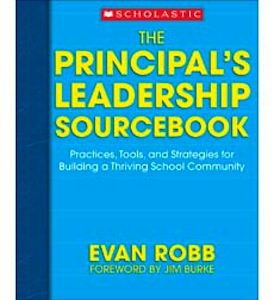
Sometimes I have challenges getting people to agree. I have never had a problem finding agreement when it comes to what students deserve. Every educator I have ever known would agree that students deserve the best we can give them. But is our best always the best for students?
Technology and more opportunities for educators to learn about best practice are exciting, but at times they can cause principals new leadership challenges. Challenges such as managing change, and the disparity between staff who embrace change and those who do not.
This brings me to the topic of my post. The gulf that can exist between staff who embrace professional development and technology integration to those who resist can be profound. Gaps in professional learning can result in very dissimilar classrooms–those that are student-centered and use technology to enhance learning, and those that continue with lectures, completing worksheets, and copying notes from the board. Teachers might think they are providing the best for students because what they are doing served them well, but unfortunately, the ways they learned are not appropriate for students in the 21st century.
I worked in schools years ago where many esteemed staff members taught in a traditional manner. Back then, schools were just beginning to integrate technology into classrooms. My school spent a year trying to learn how to use email. Of course, many staff would proudly mumble, “This too shall pass.” It did not. I would ask staff to try new methods; they resisted. At times some would communicate they could not change because I didn’t send them to conferences. Today, we live in a world where anyone can seek out information on their own and take charge of their learning if they are motivated to do so. The web and social media provide unimagined opportunities to learn and connect.
The methods and practice of many teachers who were iconic in the past have become obsolete today. Teach like those who taught you, and you might become an anachronism, totally out of touch with the digital natives in your class. If we principals believe in teaching students for their future, then we must not overtly or tacitly approve of teaching methods which don’t involve, engage and motivate students to learn.
Growth can no longer be invitational. Invitational growth creates a bimodal staff. When educators lead by offering invitational growth, those who are excited seek out opportunities to grow pedagogically and to use technology to transform. Those who choose not to partake fall further behind. If your leadership style is invitational, you give some permission not to change and grow which is not fair to students.
In some schools staff lecture, students copy notes from a board, and take tests every Friday based on recall of facts. Often, staff in these schools receive great evaluations. In all schools, educators earn more money each year even though what they do might harm kids. Some believe it was good enough for me, some staff are community icons, and some leaders compromise to protect their job. Kids lose and deserve much more from teachers and administrators. Clinging to what worked in the past is unfair to students learning in the present.
Often, in the same schools are staff who are actively learning and creating personalized learning opportunities for students, differentiating, and using projects to build on the skills we have called 21st- century skills for several decades: collaboration, communication, critical thinking, choice, and creativity As leaders, we have two difficult questions to ponder: What does it say about us if we perpetuate bad teaching? Who is most harmed by bad teaching? I’ll answer that one; it is always kids who come from the most disadvantaged backgrounds. Kids who rarely have advocates to make sure they are learning and moving forward.
The ability for a motivated educator to learn is greater now than ever before. Leaders who are willing to make growth and learning invitational are hurting kids. On the other hand, leaders who communicate and cultivate a learning organization will be best positioned for change. Staff who are committed to learning don’t opt out of growth. The time to change is now. Do it!
Check out The Robb Review Podcast for more thoughts and opinions on education!

Also, my book- The Principal’s Leadership Sourcebook, Scholastic

![]()













